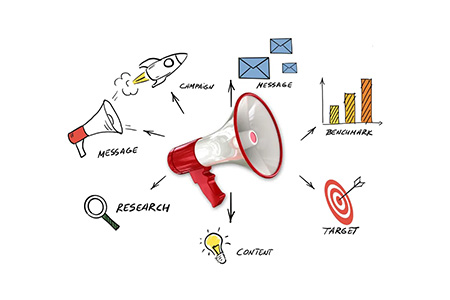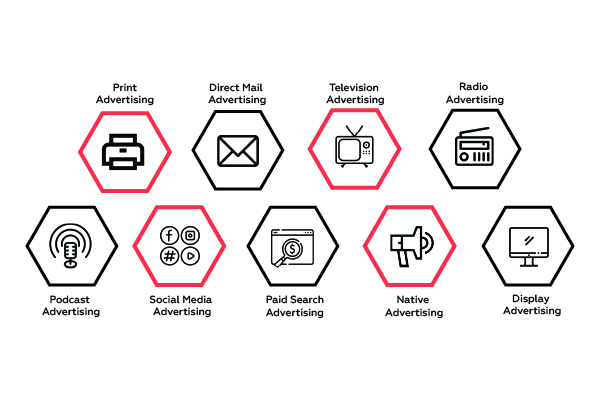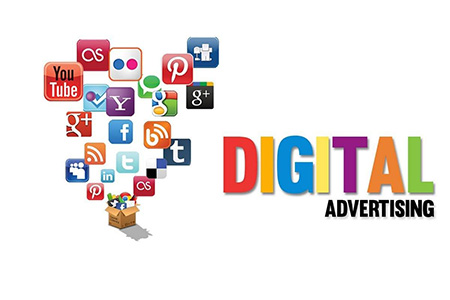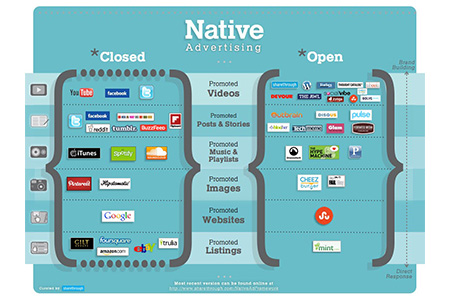Table Of Content
Advertising is a major mover and shaker in the commercial world. It affects everything from consumerism through brand visibility to a business's success. In very simple terms, an advertisement is any form of strategic communication targeted at informing, persuading, or reminding buyers about the goods, services, or ideas in question. From a humble beginning, it has come quite a long way to becoming a complex and multifaceted profession at present. Whether it is the traditional media channels, such as TV and billboards, or the contemporary digital frontiers, such as social media and influencer campaigns, advertisements ensure that brands reach the proper audience, increase sales, and leave an impression on them. The most important factor for any business that wishes to succeed.
What Is an Advertisement?
An advertisement is a tactical tool made for informing, persuading, or shocking the consumer about some product, service, or idea. An advertisement can take the form of traditional advertisement or digital media, like a commercial on TV, print media, a billboard, social media, search engines, or influencer marketing. Whatever the case, every advertisement has its core role to play, to catch the eye of potential consumers and persuade them to either buy, engage with a brand, or embrace a new idea. Advertising has come a long way from the intricate, sophisticated industry it has turned out to be today. Nowadays, ads are engineered to specifically appeal to a particular audience, touch the chords of consumer passions, and eventually result in the victory of the corresponding business.

About Advertisement
Advertising plays an integral role in the business processes since it reaches out to the target audiences of various brands in very appealing and effective ways. It creates the perception of a brand, builds its character, and allows for lifelong allegiance to a customer. Next to creating awareness, the other effect that advertisement has is that it can sway the feelings of consumers in favor of one product or another, reassuring them that their choices are correct. With all the companies competiting with each other in a saturated market at present, heavy reliance on advertising has now become a key factor to bring oneself to the notice of the consumer, induce sales, and set the stage for long-term growth. How well ads are developed and rolled out will invariably determine how well a brand does, making advertising a vital component for any business plan to consider.

The Main Aims of Advertising
Brand Awareness
In the end, it's all really about getting goods and services into the marketplace and to the heads of potential buyers. Brand-awareness campaigns are the initial stepping stone toward establishing a long-term connection with the target audience. It's through catchy slogans, logos, and constant reminders that good advertisement keeps the brand on top of the consumer's mind when making buying decisions. So advertising enables brand awareness, which gives it some semblance of difference in a sea of competitive custom, building an image and trustworthy credibility with the consumer.

Customer Engagement
Customer interaction is not merely attention-grabbing; it's building a relationship with customers. Conversation-starting, participatory advertisements build tighter relationships with shoppers, encouraging them to become brand enthusiasts. Engaged customers will respond positively to calls to action, provide feedback, or recommend others to try it out. Through the development of continuous conversation via content with a persuasion agenda, like competitions, social media campaigns involving the public, or special offers, advertising can build brand loyalty and enhance customer retention. It is a useful way to maintain your audience's interest and keep them coming back to your brand.

Sales & Revenue Growth
One of the primary purposes of advertising is to drive sales and bring in revenue. Not only does a successful advertisement inform, but it also convinces the shopper to take some action, whether it's making a momentary purchase, signing up for a service, or getting to know a brand. Advertising operates by emphasizing the value of products or services, showing their value, and fulfilling an appetite or a hurt for the customer. By leading potential clients through the buyer's journey stages from knowing to conversion, advertisements have a direct impact on a business's bottom line and are, therefore, essential to long-term financial growth.

Competitive Differentiation
To survive, one must differentiate oneself amid stiff competition. Advertising, through its various forms, provides just one way of attaining differentiation for one product from others. Through effective advertisements, a brand communicates its USPs such as quality, innovation, price, and/or customer service, through which it seeks to differentiate itself. By use of catchy messages, an array of visual cues, and placement, advertising opens up the stage for the companies to stride in among the crowds. Once an identity is created for the brand, not only could it attract the new consumers, but it is also bound to give them definite reasons to stay back.

Types of Advertisements

Traditional Advertising
Classic advertising has withstood the passage of time and remains a critical component of marketing strategies. TV ads, radio advertising, print newspapers ads, and billboards come under this category, media with wide reach for diverse populations. Though digital channels have gained supremacy over the past few years, traditional media continue to provide tremendous reach, particularly among older groups or mass-market offerings. The strength of these media is the fact that they can send messages to large numbers of people with one powerful exposure. Whether it is a late-night television ad or a bold billboard on a major highway, traditional advertising is still a tried-and-true way of establishing brand recognition.

Digital Advertising
The Internet has revolutionized advertising. Online marketing employs media such as social media, Google AdWords, and influencer marketing to target specific segments of people with targeted messages. The most appealing thing about online advertising is that it is precise. Businesses can target their audience by age, location, interests, and behavior so that the ad goes to the most suitable consumers. The second benefit of online ads is that they can be tracked in real time so that companies can watch what is working with the message and adjust as they go along. This real time data approach leads to better campaigns, improved rates of engagement, and better return on investment in the long run.

Native & Content Advertising
Native and content ads provide a less obtrusive way of promotion through placing the ads within the flow of surrounding content. Sponsored posts, sponsored articles, and video content that flow naturally from the platform's content are all forms of native advertising. These advertisements aim to deliver value to the consumer in a less obtrusive manner while selling the brand. With its similarity to the interest of the user, native advertising builds trust and increases engagement. It enables companies to offer their products or services as content extensions, so the advertising is less of a hard sell and more of a relevant source.

How to Create an Effective Advertisement?
Creating a good ad requires strategy and planning. First, you must understand who your audience is, what they care about, how they consume media, and what they are looking for. After that, selecting the appropriate platform through which you will reach them is crucial. Whichever the medium, social media, print, or television, the choice of the right channel makes your message visible to the appropriate people at the right moment. The next thing is to come up with captivating ad copy with clear, direct messaging that works for your target audience and leads to action. Last but not least, metrics on ad performance via analytics help companies monitor progress, spot gaps, and adjust future campaigns accordingly. By blending creative thinking with data informed knowledge, companies can optimize the efficacy of their advertising campaigns.

FAQs
An advertisement communicates intending to inform, persuade, or simply remind individuals about an idea, product, or service while aiming to influence consumer behavior and instigate some desired action.
The major purposes of any advertisement are to create awareness of a brand, create and keep customers, sell the brand, and create a brand distinction from competitors, wherein business growth and success are the result.
Advertisements play a role in creating attitudes toward consumers, just like advertisements influence the purchase of products as well as forming emotional bonds. With a strong motivating factor, advertisements can, in short, drive consumer behavior, cement loyalty among consumers, and foster a long term association with the brand.



